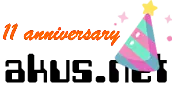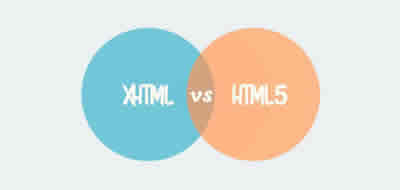Introduction to HTML - Tags and attributes
HTML is the language to create Websites. A code written in this language is basically, a text that the browser will display in web page format.

HTML is the language used to create web pages.
A code written in this language is basically a text that the browser (Internet Explorer, Firefox, Google Chrome, Opera or any other) will display in web page format.
This text can generate color, size and font, images, hyperlinks and data entries, as well as selection lists, buttons, etc., determined and configured by the identifiers, also called tags.
An identifier or a tag is a mark that allows you to set the attributes of the size, position and behavior of the text and / or the images on the web page.
As a general rule, the tags consist of an opening (when its characteristics are established) and a closure (when they must cease to take effect) and restore the original characteristics); however, by their very nature some tags do not have closure.
The base format of an identifier is <tag [attribute]>.
This means that to include an tag in an HTML source code, type the angle bracket by pointing to the left <, the name of the tag, the attributes if they proceed (without brackets) and the angle bracket pointing to the right >
Para cerrar el identificador, se usa el formato </identificador> sin atributos, pero incluyendo la barra / entre el primer paréntesis angular y el nombre del identificador.
To close the tag, the format </tag> without attributes is used, but including the / bar between the first angle bracket and the name of the tag.
The text between both tags (the opening and the closing one is the one that will be affected by these tags).
The tgs of text, images and hyperlinks can be combined to improve the final result, in turn, in an identifier, the different optional and obligatory attributes (some of them are) can be combined in the same line or in other lines, in order to obtain the desired effect at each moment.
There are many attributes and some tags that have a redundant effect and that not all the Everybody knows.
There a number of tags that have been rejected by the W3C consortium.
The reason for this disapproval is that there other more efficient ways.
However, a tag is deprecated does not mean you should not use it, much less. In fact, in the document, I speak of some of them very common today and in the future, it.
Is important that you understand the scope of the word "disapproved" in this context.
The tags not disappear disapproved or browsers will no longer recognize them in long time. The use of these tags does not represent, in any way, an imminent danger to your pages.
It is simply a reference. Although it is important that you know thoroughly, and use properly, cascading style sheets.
It will also miss some of the attributes of many tags, in the first part. This is because those attributes are not used in basic HTML, but in dynamic HTML and, more specifically, in scripting languages.
There are some HTML tags, not standardized by the Consortium, that only work in a specific browser (Explorer, Firefox, etc.)
To write a code in HTML, we will need a plain text editor, that is, that does not introduce unwanted characters in the code. For example, the Windows notebook (except, of course, that you use another operating system).
Later on, when you are more familiar with the plain text editing, you can choose other more powerful and flexible editors, but at first, the notebook is very comfortable.
HTML really is not a programming language, in the strict sense of the word, since by its very nature, it does not implement some basic functions of any programming language, such as, for example, access to database, graphic editing functions , etc.
However, it is essential to enter the design of web pages.
HTML is not sensitive to the use of uppercase and lowercase letters. It will work the same if we type the tags and their parameters (also called attributes) in uppercase, lowercase or combination of both. Of course, this rule (like all in life) has an exception.
As a general rule, we will get used to writing the tags and their attributes (as well as their values) in lowercase. The reason for this is that, after studying HTML and DHTML, we can study PHP and this Yes requires the use of lowercase letters so we better get used to it.
In any case we will talk about HTML as the language par excellence for the creation of web pages. Nowadays, all the pages that we find in the network also implement other technologies, such as CSS, JavaScript, Jquery, AJAX, JSON, PHP, ASP, etc.
However, absolutely all have a base of HTML on which, in turn, those other technologies are implemented.
Therefore, if we want to dedicate ourselves to the design and creation of web pages, either to create our own page or to work in the sector, a deep knowledge of HTML is essential.
This document is designed to teach you how to create your own web pages and publish them. In this field we started from the beginning and then we progressively increased the difficulty of the topics discussed.
To read this document, no prior knowledge of web page development is required. However, I do know that you are familiar with the use of browsers at the user level, which means that you have already had contact with Internet browsing.
The lessons taught in the work refer to the latest current version of XHTML 1.1 along with the new HTML5 properties. From your own point of view, this means having the latest versions of the most popular browsers.
In the second part we will study two of the fundamental pillars of HTML and DHTML. Let's start at the beginning, with the first steps in HTML.
CITE ARTICLE
For homework, research, thesis, books, magazines, blogs or academic articles
APA Format Reference:
Delgado, Hugo. (2019).
Introduction to HTML - Tags and attributes.
Retrieved Nov 08, 2025, from
https://disenowebakus.net/en/introduction-html





